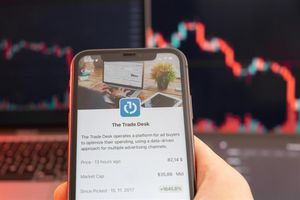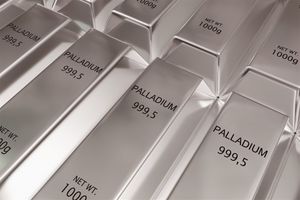
In the dynamic landscape of India's industrial sector, the ability of companies to generate consistent free cash flow (FCF) stands as a critical barometer for long-term investment viability and sustainable growth. Garware Technical Fibres Limited (NSE: GARFIBRES), a prominent player in the technical textiles industry, finds itself under the spotlight as analysts and investors scrutinize its FCF performance. While the company has demonstrated robust FCF growth over the longer term, recent fluctuations raise pertinent questions about its future consistency, directly impacting portfolio risk assessment and the pursuit of outstanding investment returns. As of October 5, 2025, the market is keenly observing whether Garware can translate its operational efficiencies into predictable cash generation, a hallmark of resilient businesses.
The immediate implications for investors are significant. Consistent FCF is often seen as a strong indicator of a company's financial health, its capacity to fund future growth without relying heavily on debt or equity dilution, and its potential to return capital to shareholders. For Garware Technical Fibres, a positive answer to the FCF consistency question could solidify its position as a compelling long-term investment, offering a more predictable return profile. Conversely, sustained inconsistency could signal underlying challenges, prompting a re-evaluation of its intrinsic value and risk premium.
A Deep Dive into Garware Technical Fibres' Financial Currents
Garware Technical Fibres Limited's financial narrative presents a compelling study in growth tempered by recent volatility. Historically, the company has showcased a generally strong Free Cash Flow (FCF) performance, marked by impressive average annual growth rates of 45% over the past three years and 16% over the past five years. This robust long-term trajectory underscores efficient operations and strategic capital management. However, the fiscal year ending March 31, 2025, witnessed a 14% decrease in FCF compared to the previous year, with the FCF for Q3 2025 reported as ₹0.00, and a total decrease of ₹-248.24 million for the entire 2025 fiscal year. These short-term pressures suggest either strategic investments that temporarily absorbed cash or operational headwinds that warrant closer examination.
The company's FCF generation is fundamentally driven by its strong operating income and profitability. Garware (NSE: GARFIBRES) has consistently maintained high gross, operating, and net profit margins, indicative of strong pricing power and cost control. For instance, the gross profit margin climbed from 39.5% in 2020 to 42.0% in 2023, while the operating profit margin rose from 22.7% to 26.0% in the same period. Prudent capital expenditure (CapEx) management also plays a crucial role; CapEx figures for March 2025 were -43.76 Cr, with average annual growth rates showing periods of reduced capital intensity, which can positively impact FCF. Furthermore, Garware's efficient working capital management, highlighted by a strong Cash Conversion Cycle of -80.55 days and robust liquidity ratios (current ratio of 2.5, quick ratio of 1.8), reinforces its capacity to convert profits into cash. The company's disciplined debt management, having decreased debt by 57.14 Cr and maintaining a healthy interest coverage ratio of 16.14, further strengthens its financial foundation.
Initial market reactions to Garware Technical Fibres' FCF fluctuations have been mixed. While analysts generally hold a positive outlook, recommending an "overweight or purchase" for the stock and upwardly revising sales forecasts, there are notable concerns regarding its valuation. The company is currently considered "overvalued by 18%" compared to its intrinsic value, trading at a high Price-to-Earnings (P/E) ratio of 35.47. This suggests that while operational strengths and future growth prospects are acknowledged, the current market price may already factor in significant future performance, potentially limiting immediate upside for new investors. Key players and stakeholders, including institutional investors and retail shareholders, are closely monitoring the company's ability to revert to its long-term FCF growth trend and justify its premium valuation.
The Competitive Landscape: Winners and Losers
The consistency of Garware Technical Fibres' (NSE: GARFIBRES) free cash flow has direct implications for its competitive standing within the technical textiles and synthetic fiber industry. Companies that can reliably generate FCF are better positioned to invest in research and development, expand production capacities, pursue strategic acquisitions, or return capital to shareholders, thereby enhancing their competitive edge. In contrast, those with erratic or negative FCF may struggle to fund growth internally, leading to increased reliance on external financing, which can dilute shareholder value or increase financial risk.
For Garware Technical Fibres, maintaining FCF consistency is crucial to sustaining its "narrow economic moat," a durable competitive advantage derived from factors like product differentiation, strong brand recognition, or efficient production processes. Should Garware successfully navigate its recent FCF fluctuations and return to its historical growth trajectory, it stands to reinforce its market leadership. This consistency would enable continued investment in advanced materials and technologies, further differentiating its products in sectors like fishing, agriculture, and defense. Potential "winners" from this scenario would be its long-term shareholders who benefit from a financially robust company capable of sustained value creation.
Conversely, if Garware struggles to deliver consistent FCF, its competitors could seize the opportunity to gain market share. Companies like Shri Lakshmi Cotsyn Limited (NSE: SLCL) or other specialized textile manufacturers, even if smaller, could potentially benefit by presenting themselves as more stable and reliable investment alternatives, especially if they demonstrate superior FCF generation. These competitors might attract investors looking for less volatile cash flow profiles or companies with more attractive valuations. Furthermore, a prolonged period of FCF inconsistency for Garware could force it to scale back growth initiatives, impacting its ability to innovate and compete effectively against agile rivals.
The impact extends beyond direct competitors to the broader supply chain. Suppliers to Garware might face less predictable order volumes if the company's investment plans become uncertain due to cash flow issues. Customers, on the other hand, might benefit from a more competitive market if Garware's position weakens, potentially leading to more favorable pricing or increased innovation from rival firms vying for market share. Ultimately, the ability to generate and sustain robust FCF is a critical determinant of who thrives and who struggles in the intensely competitive technical textiles industry.
Broader Significance and Market Implications
The ongoing scrutiny of Garware Technical Fibres' (NSE: GARFIBRES) free cash flow consistency extends beyond the company itself, reflecting broader industry trends and the evolving demands of financial markets. In the technical textiles and synthetic fiber sector, sustained innovation and capital investment are paramount. Companies with strong FCF are better equipped to navigate raw material price volatility, invest in automation, and develop high-performance materials that meet increasingly stringent industry standards and consumer expectations. Garware's situation highlights the industry-wide challenge of balancing growth initiatives with prudent cash management, especially in a global economy prone to supply chain disruptions and shifting demand patterns.
This event fits into a broader trend where investors are placing an increasing premium on cash-generating capabilities over mere revenue growth. Post-pandemic, capital markets have become more discerning, favoring companies that can demonstrate self-sufficiency and resilience through strong FCF. This trend is particularly relevant for industrial companies like Garware, where significant capital expenditure is often required to maintain and expand operations. The company's FCF performance will likely serve as a benchmark for how well Indian technical textile manufacturers can convert their operational strengths into tangible shareholder value in an increasingly competitive global market.
Potential ripple effects on competitors and partners are also considerable. If Garware, a leader in its niche, faces challenges in FCF consistency, it could signal underlying issues within the broader technical textiles sector, such as increased competition, margin pressures, or technological shifts. This might prompt other industry players to re-evaluate their own cash flow strategies and capital allocation plans. Regulatory or policy implications could also emerge if FCF concerns become widespread, potentially leading to calls for greater transparency in financial reporting or governmental support for strategic industries like technical textiles. Historically, periods of economic uncertainty have often led to a flight to quality, where investors prioritize companies with strong balance sheets and robust cash flows, making Garware's current situation a bellwether for investor sentiment in the industrial sector.
Comparing this to similar events, companies that have successfully navigated periods of FCF volatility often did so by optimizing operational efficiencies, divesting non-core assets, or strategically managing their capital expenditure cycles. Those that failed to address FCF inconsistencies often faced valuation corrections, increased borrowing costs, and a loss of investor confidence. Garware's ability to address the recent dip in FCF will therefore be critical in determining its long-term trajectory and its standing within the broader financial market.
What Comes Next: Navigating the Future
The path forward for Garware Technical Fibres (NSE: GARFIBRES) will largely depend on its ability to address the recent fluctuations in its free cash flow and reaffirm its long-term growth narrative. In the short term, the company will likely focus on optimizing its working capital management and carefully calibrating its capital expenditures to ensure positive cash generation. Management might prioritize projects with quicker returns on investment or defer non-essential spending to bolster FCF. Investors should closely watch upcoming quarterly results for signs of improved cash flow from operations and a more stable FCF trajectory, which could signal a rebound in investor confidence.
In the long term, Garware's strategic pivots will be crucial. The company's "narrow economic moat" and strong Return on Capital Employed (ROCE) of 21.52% over the past three years provide a solid foundation. Potential strategic adaptations include intensifying focus on high-margin product segments, expanding into new geographical markets, or leveraging its R&D capabilities to introduce innovative products that command premium pricing. Given analyst forecasts for sales to surge by 48% by 2027, the challenge lies in ensuring that this revenue growth translates efficiently into free cash flow, rather than being absorbed by increased working capital requirements or aggressive capital spending.
Market opportunities or challenges that may emerge are intertwined with these strategic choices. If Garware successfully demonstrates consistent FCF generation, it could become an even more attractive investment, potentially leading to a re-rating of its stock and a reduction in its perceived overvaluation. This would open opportunities for growth-oriented investors. Conversely, failure to stabilize FCF could present challenges, including a sustained high cost of capital, increased investor skepticism, and potential pressure on its stock price. This could create opportunities for value investors willing to take on higher risk for a potentially greater reward, should the company eventually turn around.
Potential scenarios and outcomes range from a strong recovery, where Garware re-establishes its FCF consistency and continues its growth trajectory, to a more challenging period where persistent FCF issues impact its ability to fund growth and maintain its competitive position. The most probable scenario involves a concerted effort by management to optimize cash flow generation, leveraging its operational strengths and market position to deliver more predictable financial performance. Investors will be looking for clear communication from the company regarding its cash flow strategies and capital allocation priorities in the coming months.
Comprehensive Wrap-up: Assessing Market Movement and Lasting Impact
The detailed examination of Garware Technical Fibres' (NSE: GARFIBRES) free cash flow performance underscores a critical juncture for the company and its investors. The key takeaway is that while Garware possesses strong operational efficiencies, a robust balance sheet, and a commendable long-term FCF growth record, the recent short-term fluctuations in its FCF demand close attention. Its ability to revert to a consistent FCF generation pattern will be paramount for sustaining its premium valuation and delivering outstanding investment returns. The market's increasing emphasis on cash flow quality means that Garware's financial discipline in converting profits into tangible cash will be more scrutinized than ever.
Moving forward, the market will assess Garware based on its capacity to leverage its "narrow economic moat" and high ROCE to drive both revenue growth and FCF consistency. The company's efficient working capital management and prudent debt levels are significant strengths that can aid in this endeavor. However, the current valuation, which analysts deem "overvalued by 18%" relative to its intrinsic value, suggests that much of its future success is already priced in. This implies that investors seeking outsized returns will need to see not just consistent FCF, but also a continued acceleration in growth or unexpected operational improvements to justify further upward re-ratings.
The lasting impact of this period of scrutiny for Garware will likely be a heightened focus on cash flow metrics across the technical textiles industry. It reinforces the principle that while profitability is essential, a company's true financial health and capacity for self-funded growth are best reflected in its free cash flow. For investors, this event serves as a reminder to look beyond headline earnings and delve into the cash flow statements, assessing a company's ability to generate cash after all operating expenses and capital expenditures.
In the coming months, investors should watch for several key indicators: Garware's quarterly FCF reports, any strategic announcements regarding capital allocation or new projects, and analyst revisions to their FCF forecasts. A sustained improvement in FCF, coupled with continued revenue growth and disciplined capital management, would signal that Garware Technical Fibres is firmly on track to deliver consistent returns. Conversely, a prolonged period of FCF inconsistency could necessitate a re-evaluation of its investment thesis.
This content is intended for informational purposes only and is not financial advice






